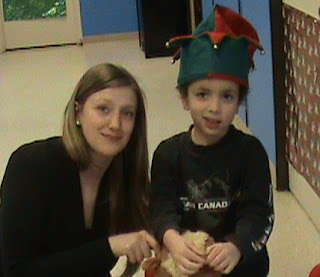As a dog owner, I can attest to the rewards and challenges of sharing a home with a dog. It is my love of dogs and my interest in science that has made me interested in the impact of service dogs on the lives of individuals with autism and their families.
Dogs have been used to aid individuals with medical conditions and disabilities since 1929. The American National Service Dog program began to provide dogs for individuals with autism in 1996. Research on the impact these dogs have on the families they join is not as thorough as I would have liked, but I did find 2 Canadian studies, which I thought were worth sharing.
Kristen E. Burrows and Cindy L. Adams (2005) conducted a qualitative investigation with 10 Ontario families with a service dog. They found that in general parents found the dogs to be a “valuable addition”. The most important reason given for this was that the dog improved the safety and security for their child both at home and in the community. As safety and security were increased, parents felt they could take their children to more places in the community. Not fearing safety and being able to access the community was reported to have improved the quality of life for all members of the family.
Parents in Burrows and Adams (2005) study also reported a decrease in anxiety in their children. Sonia Lupien, a professor at the University of Montréal, also reported this finding in her work. The research she and her colleagues conducted found a significant decrease in the stress hormone cortisol in the person with autism, after the introduction of a service dog to the home. Parent in both studies also reported a decrease in problem behaviours after the introduction of the dog.
While the benefits of having a dog appear to be great, dog ownership is not without its challenges. Parents in the Burrows and Adams (2005) study found they often had to fight for public access rights both in the school system and the community in general. Also, integrating the dog into the family and the extra work required in the care of a dog (including: exercise, training, grooming, feeding, preparing the dog to go to the community), were also listed as challenges. I can speak from my own experience that my dog takes about 2 hours of my daily time to provide the care and exercise she requires. This time commitment is something all potential dog owners need to consider before adding a dog to the household.
While more research into the direct impact of having a service dog needs to be conducted, this limited preliminary work is very promising. There is no price that can be put on improvements in safety and reduction of anxiety. However, regardless of the potential gains, the challenges of owning any dog seriously need to be considered before making a dog part of your family. Unlike other tools we use to aid our kids, dogs are living creatures, who have their own needs. If you are considering adding a furry friend to your home, please make sure that the dog will fit into your life and the benefits will be greater than the cost.
Kristen
















